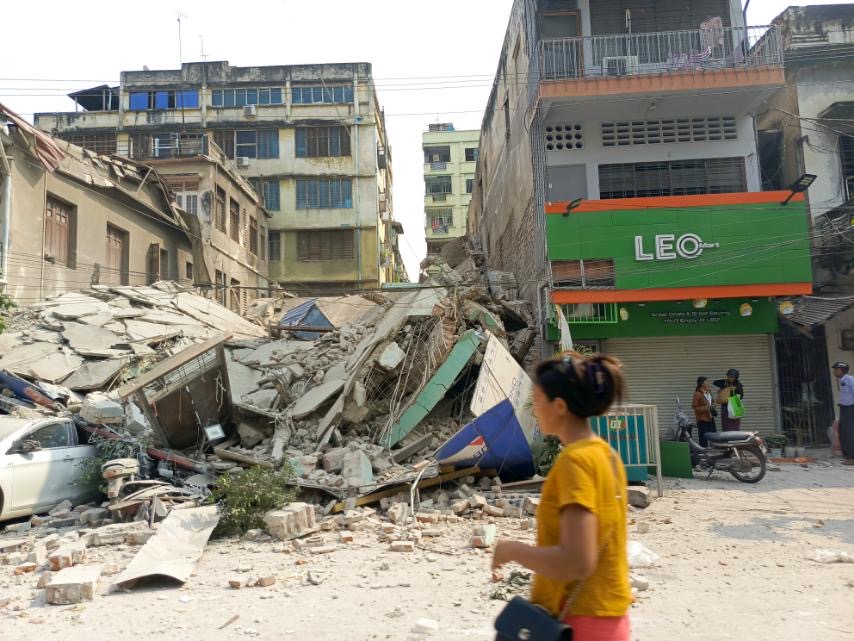
We Are Responding to
the Earthquake in Myanmar
On March 28, central Myanmar was struck by a devastating 7.7-magnitude earthquake, followed almost immediately by powerful aftershocks. International Medical Corps is responding.
More than 3,700 people have been confirmed dead, a number expected to rise as search efforts continue. Many thousands have been injured, and vital infrastructure—including health facilities—have been damaged or destroyed.
We are responding to this crisis, working closely with international and local authorities. Our initial response team arrived within days of the quake to assess conditions and coordinate relief efforts with local partners, and after receiving official requests we have deployed a mobile Emergency Medical Team that is providing medical and mental health care to people in need.
You can help mend the lives broken by this disaster. Support our work today.
Our Response to the Earthquake in Myanmar
International Medical Corps is responding to this crisis, working closely with regional authorities, the World Health Organization and other partners to coordinate relief efforts. Our response team quickly deployed to meet with partners and assess needs, and after receiving an official request we have deployed a mobile Emergency Medical Team (EMT) to the area that is providing medical and mental health care to more than 100 people every day affected by the disaster.
In addition to the medical and logistical experts on our initial response team, our specialised EMT includes doctors and nurses, with their efforts supplemented by local clinicians, operating from an EMT Type 1 Mobile unit based next to a destroyed hospital in Pobba Thiri, near the capital city of Nay Pyi Taw. Our international team will train and build the capacity of local partners while providing emergency and trauma care services to people in need. As the only NGO classified by the WHO as a Type 1 EMT, both Fixed and Mobile, we are uniquely positioned to help.
We also are supporting three local partners that have deployed mobile medical units in Mandalay and Sagaing to provide medical and mental health services as well as water, sanitation and hygiene support, including water trucking, hygiene kits and training, and sanitation services.
Before the earthquake, Myanmar was experiencing a humanitarian crisis due to years of conflict. The country currently has the fifth-highest number of people in need of humanitarian assistance globally, with approximately 20 million people—one-third of the population—in need, and some 15 million people projected to face acute food insecurity during 2025. The earthquake has further exacerbated this crisis, leaving millions without access to essential health, protection, nutrition, and water, sanitation and hygiene services. Sagaing City, near the epicentre of the quake, is home to 1.3 million internally displaced persons (IDPs)—one-third of all IDPs in Myanmar.
Infrastructure has been damaged or destroyed throughout the region—including healthcare facilities, which have been overwhelmed with demand from people injured in the quake. Multiple hospitals have been evacuated due to damage and risk of collapse, leading to a shortage of beds for the injured.
There also is a shortage of medical personnel to manage the surge of casualties and ongoing health concerns. People are camping out in the open, afraid to return to their homes. More than half of latrines and other sanitation facilities in the region have been destroyed, water systems have been damaged, and extreme heat and heavy rains are raising the risk of cholera, malaria, dengue, skin diseases and other waterborne illnesses. Extensive damage to critical infrastructure—including airports, roads and communications systems—have so far hindered humanitarian efforts, as have shortages of medical supplies.
We will continue to work closely with international, regional and local partners to increase healthcare surge capacity and coordinate humanitarian aid over the course of our response.
We will report more on our activities as the situation develops. Please check this page frequently for updates.
Please Help Communities Affected by the Quake
Donate today to provide medical care and supplies to families affected by this devastating earthquake
Give now